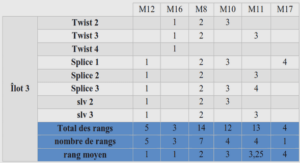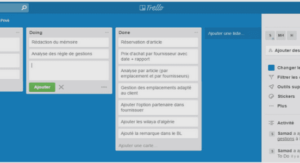Revue de littérature
L’étude des problématiques concernant la rivière a été réalisée dans le premier cha- pitre. On a ainsi montré que la gestion de la rivière comprenait un nombre croissant de contraintes, notamment les contraintes de conservation voire de restauration du milieu. Le deuxième chapitre a montré, à partir de l’exemple de la faune aquatique, comment ces nouvelles contraintes ont mis en exergue une problématique classique, d’autant plus en hydrologie, qui est celle du besoin de mesure pour caractériser les milieux étudiés. Pour l’application spécifique de la modélisation en rivière, il apparaît que la vitesse et la topographie immergée sont deux variables physiques fondamentales. De nombreux travaux existent par ailleurs pour développer des méthodes de mesure de la vitesse de surface, principalement autour de la mesure de vitesse par images de particules (en anglais piv) [Adrian, 1984,Fujita et al., 1997,Holland et al., 2001,Creutin et al., 2003, Muste et al., 2004, Hauet, 2006], le radar Doppler [Melcher et al., 2002, Plant et al., 2005], et de futures applications du lidar Doppler sont envisageables. Nos travaux se concentrent sur l’étude de la topographie immergée de rivière. L’état de l’art réalisé concerne donc les travaux relatant d’applications concrètes de la dé- termination du relief immergé ou de la bathymétrie de rivière avec des techniques de télédétection. Ce chapitre contient la version intégrale de l’article : « Feurer, D., Bailly, J., Puech, C., Le Coarer, Y., et Viau, A. (2008). Very high resolution mapping of river immersed topography by remote sensing. Progress in Physical Geography, 32(4) :403- 419 » [Feurer et al., 2008]. Cette revue de littérature a de plus été présentée au colloque tisors ii [Feurer et al., 2006]
Very high-resolution mapping of river-immersed topography by remote sensing
Rivers have a prominent role in many contexts – as a natural environment, as a transfer medium, as a physical medium, as a natural resource. This list is not exhaustive. Understanding the river physical and eco- logical processes requires knowledge of the three-dimensional geometry of the riverbed, at various spatial and temporal scales, as shown by three examples. First, a keyparameter in water resource management is the volume of water fl owing in the river and it may be computed by measuring the immersed topography as well as the water level. Second, river morphology monitoring and riverine landscape management requires understanding of underlying physical pro- cesses. This is currently done through hy- draulic models. These models are most often calibrated or validated with gauging data, which are available at only a few points. The need for detailed knowledge of riverbed topography sh species and each development stage, the relationship between a presence index and river physical parameters (depth, speed, bottom type) (Le Coarer and Dumont, 1995a). These last two needs are at the root of the work pre- sented hereafter.
Three-dimensional representations of riverbeds are now commonly used in hydro- logical studies (Lane et al., 1994). Accurate measurement of the river geometry at a large scale, and frequently with very high spatial resolution, is required. If these measures can be obtained from a boat for navigable rivers, the operational fi eldwork is tedious. Ground surveys that provide such measurements are time-consuming and necessitate large amounts of manpower. As a consequence, the ratio cost/area covered is very high and investigation is constrained to small parts of the river. As a result, limited funding and working time mean that hydrologic studies The scale question shows up quite often in hydrologic studies. Remote sensing has hence been widely used in this domain (Muller et al., 1993; Gendreau and Puech, 2002; Mertes, 2002; Schmugge et al., 2002). Moreover, remote sensing, as a non-contact measurement method, allows one to col- lect data about an inaccessible river and, in addition, provides complementary data characterizing the river (Creutin, 2001). In the literature river-immersed topography or water depth is often one parameter among others and is rarely the main issue. We have extracted from the literature the informa- tion of interest and synthesized it into a re- view of remote sensing techniques that have been used to map depth and/or riverbed- immersed topography (Table 1).



